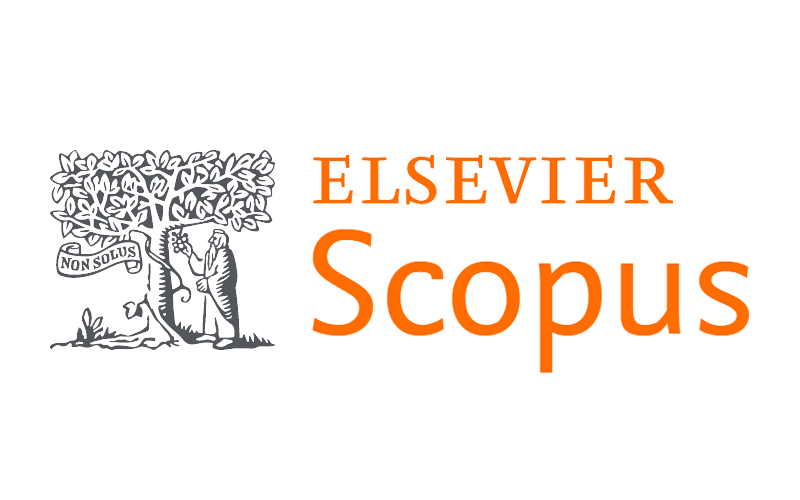HIV index testing implementation at public health clinics in South Africa
DOI:
https://doi.org/10.7196/SAMJ.2025.v115i8.2652Keywords:
HIV testing, Index testing services, Index testing implementationAbstract
Background. Most ongoing HIV infection is caused by individuals with undiagnosed or untreated HIV. HIV index testing services (ITS), also known as risk network recruitment, have been recommended by international and national programmes to increase diagnosis of untreated people living with HIV (PLHIV) to link them to HIV treatment services. The scale of routine implementation of ITS is unclear.
Objectives. To describe clinic-level adoption and implementation of ITS in South Africa (SA).
Methods. We used random sampling to select participating healthcare facilities from all nine SA provinces. A survey link was sent to a facility manager via email or WhatsApp. Summary statistics were used to describe the findings.
Results. From August 2022 to March 2024, we sent a survey link to 350 systematically sampled clinics; 305 (87.1%) completed the survey. Of those clinics, 260 (85.2%) reported some form of ITS implementation. More than half (n=166, 63.8%) reported using client (passive) referral. Available intimate partner violence (IPV) mitigation services provided counselling by lay HIV testing counsellors for most (n=215, 82.7%) facilities; 120 (46.1%) also had an on-site social worker to assist with IPV mitigation, and 12 (4.1%) had no IPV service available. Approximately half of the clinics offering ITS depended on a supporting non-governmental organisation to provide this service.
Conclusion. ITS was reported to be provided by most public clinics in SA. However, the majority provided passive ITS, depending on the index client to refer their contacts to a local clinic for HIV testing. This approach had little evidence of effectiveness.
References
1. Joint United Nations Programme on HIV/ AIDS. In Danger: UNAIDS Global AIDS Update 2022. Geneva: UNAIDS, 2022. https://doi.org/10.18356/9789210019798 (accessed 8 August 2025).
2. Burns DN, DeGruttola V, Pilcher CD, et al. Toward an endgame: Finding and engaging people unaware of their HIV-1 infection in treatment and prevention. AIDS Res Hum Retroviruses 2014;30(3):217-224. https://doi.org/10.1089/aid.2013.0274
3. Wong CS, Wei L, Kim Yeon-Sook. HIV late presenters in Asia: Management and public health challenges. AIDS Res Treat 2023;9488051. https://doi.org/10.1155/2023/9488051
4. Kahabuka C, Plotkin M, Christensen A, et al. Addressing the first 90: A highly effective partner notification approach reaches previously undiagnosed sexual partners in Tanzania. AIDS Behav 2017;21(8):2551-2560. https://doi.org/10.1007/s10461-017-1750-5
5. Sharma M, Naughton B, Lagat H, et al. Real-world impact of integrating HIV assisted partner services into 31 facilities in Kenya: A single-arm, hybrid type 2 implementation-effectiveness study. Lancet Glob Health 2023;11(5):e749-e758. http://doi.org/10.1016/S2214-109X(23)00153-5
6. World Health Organization. Guidelines on HIV Self-testing and Partner Notification. Supplement to Consolidated Guidelines on HIV Testing Services. Geneva: WHO, 2016.
7. National Department of Health. Standard Operating Procedures for HIV Index Testing Services 2021. Pretoria: NDoH, 2021.
8. Plotkin M, Kahabuka C, Christensen A, et al. Outcomes and experiences of men and women with partner notification for HIV testing in Tanzania: Results from a mixed method study. AIDS Behav 2018;22(1):102-116. https://doi.org/10.1007/s10461-017-1936-x
9. US President’s Emergency Plan for AIDS Relief. PEPFAR 2021 Country and Regional Operational Plan (COP/ROP) Guidance for all PEPFAR Countries, 2021:1-487. https://www.state.gov/wp-content/ uploads/2020/12/PEPFAR-COP21-Guidance-Final.pdf (accessed 16 March 2023).
10. Odoyo JB, Morton JF, Ngure K, et al. Integrating PrEP into HIV care clinics could improve partner testing services and reinforce mutual support among couples: Provider views from a PrEP implementation project in Kenya. J Int AIDS Soc 2019;22(S3):65-71. https://doi.org/10.1002/jia2.25303
11. Chauvet G. Inference for two-stage sampling designs. J R Stat Soc 2020;82(3):797-815. https://doi. org/10.1111/rssb.12368
12. Harris PA, Taylor R, Minor BL, et al. The REDCap consortium: Building an international community of software platform partners. J Biomed Inform 2019;95:103208. https://doi.org/10.1016/j. jbi.2019.103208
13. Masyuko SJ, Cherutich PK, Contesse MG, et al. Index participant characteristics and HIV assisted partner services efficacy in Kenya: Results of a cluster randomised trial. J Int AIDS Soc 2019;22(S3):49- 56. https://doi.org/10.1002/jia2.25305
14. Qing-Hai H, Han-Zhu Q, Jia-Ming L, et al. Assisted partner notification and uptake of HIV testing among men who have sex with men: A randomised controlled trial in China. Lancet Regional Health Western Pacific 2021;12:100171. https://doi.org/10.1016/j.lanwpc.2021.100171
15. Cherutich P, Golden MR, Wamuti B, et al. Assisted partner services for HIV in Kenya: A cluster randomised controlled trial. Lancet HIV 2017;4(2):e74-e82. https://doi.org/10.1016/S2352- 3018(16)30214-4
16. Maierhofer CN, Powers KA, Matoga MM, et al. Characterizing network-based HIV testing interventions to guide HIV testing and contact tracing at STI clinics in Lilongwe, Malawi. J Acquir Immune Defic Syndr 2023;94(2):151-159. https://doi.org/10.1097/QAI.0000000000003240
17. Brown LB, Miller WC, Kamanga G, et al. HIV partner notification is effective and feasible in sub-Saharan Africa: Opportunities for HIV treatment and prevention. J Acquir Immune Defic Syndr 2011;56(5):437-442. https://doi.org/10.1097/qai.0b013e318202bf7d
18. Dalal S, Johnson C, Fonner V, et al. Improving HIV test uptake and case finding with assisted partner notification services. AIDS 2017;31(13):1867-1876. https://doi.org/10.1097/QAD.0000000000001555
19. Grande M, Mawandia S, Bakae O, et al. Intensified assisted partner notification implementation in Botswana increased partner identification but not HIV case-finding: Findings highlight the need for improved data monitoring. J Acquir Immune Defic Syndr 2021;87(3):951-958. https://doi.org/10.1097/ QAI.0000000000002673
20. Shamu S, Farirai T, Kuwanda L, et al. Comparison of community-based HIV counselling and testing (CBCT) through index client tracing and other modalities: Outcomes in 13 South African high HIV prevalence districts by gender and age. PLoS ONE 2019;14(9):1-14. https://doi.org/10.1371/journal. pone.0221215
21. Kamanga G, Brown L, Jawati P, Chiwanda D, Nyirenda N. Maximizing HIV partner notification opportunities for index patients and their sexual partners in Malawi. Malawi Med J 2015;27(4):140- 144.
22. Katbi M, Adegboye A, Adedoyin A, et al. Effect of clients strategic index case testing on community- based detection of HIV infections (STRICT study). Int J Infect Dis 2018;74:54-60. https://doi. org/10.1016/j.ijid.2018.06.018
23. Little KM, Kan M, Samoylova O, et al. Implementation experiences and insights from the scale-up of an HIV assisted partner notification intervention in Central Asia. J Int AIDS Soc 2019;22(S3). https:// doi.org/10.1002/jia2.25313
24. Jubilee M, Park FJ, Chipango K, Pule K, Machinda A, Taruberekera N. HIV index testing to improve HIV positivity rate and linkage to care and treatment of sexual partners, adolescents and children of PLHIV in Lesotho. PLoS ONE 2019;14(3):1-12. https://doi.org/10.1371/journal.pone.0212762
25. Tembo TA, Kim MH, Simon KR, et al. Enhancing an HIV index case testing passive referral model through a behavioural skills-building training for healthcare providers: A pre-/post-assessment in Mangochi District, Malawi. J Int AIDS Soc 2019;22(S3):90-97. https://doi.org/10.1002/jia2.25292
26. Mutale W, Freeborn K, Graybill LA, et al. Addition of HIV self-test kits to partner notification services to increase HIV testing of male partners of pregnant women in Zambia: Two parallel randomised trials. Lancet Glob Health 2021;9(12):e1719-e1729. https://doi.org/10.1016/S2214-109X (21)00393-4
27. Mabuto T, Mshweshwe-Pakela N, Ntombela N, et al. Is HIV post-test counselling aligned with universal test and treat goals? A qualitative analysis of counselling session content and delivery in South Africa. AIDS Behav 2021;25(5):1583-1596. https://doi.org/10.1007/s10461-020-03075-x
28. Mahachi N, Muchedzi A, Tafuma TA, et al. Sustained high HIV case-finding through index testing and partner notification services: Experiences from three provinces in Zimbabwe. J Int AIDS Soc 2019;22(S3):23-30. https://doi.org/10.1002/jia2.2532
29. Mwango LK, Stafford KA, Blanco NC, et al. Index and targeted community-based testing to optimise HIV case finding and ART linkage among men in Zambia. J Int AIDS Soc 2020;23(S2):51-61. https:// doi.org/10.1002/jia2.25520
30. Greensides D, Bishop K, Manfredini L, Wong V. Do no harm: A review of social harms associated with HIV partner notification. Glob Health Sci Pract 2023;11(6):e2300189. https://doi.org/10.9745/ ghsp-d-23-00189
31. Young CR, Arnos DM, Matthews LT. A scoping review of interventions to address intimate partner violence in sub-Saharan African healthcare. Glob Public Health 2019;14(9):1335-1346. https://doi.org /10.1080/17441692.2019.1567802
Downloads
Published
Issue
Section
License
Copyright (c) 2025 N Mshweshwe-Pakela, T Mabuto, R Lebyane, M Hamisi, S Gininza, V Chihota, C J Hoffmann

This work is licensed under a Creative Commons Attribution-NonCommercial 4.0 International License.
Licensing Information
The SAMJ is published under an Attribution-Non Commercial International Creative Commons Attribution (CC-BY-NC 4.0) License. Under this license, authors agree to make articles available to users, without permission or fees, for any lawful, non-commercial purpose. Users may read, copy, or re-use published content as long as the author and original place of publication are properly cited.
Exceptions to this license model is allowed for UKRI and research funded by organisations requiring that research be published open-access without embargo, under a CC-BY licence. As per the journals archiving policy, authors are permitted to self-archive the author-accepted manuscript (AAM) in a repository.
Publishing Rights
Authors grant the Publisher the exclusive right to publish, display, reproduce and/or distribute the Work in print and electronic format and in any medium known or hereafter developed, including for commercial use. The Author also agrees that the Publisher may retain in print or electronic format more than one copy of the Work for the purpose of preservation, security and back-up.





